Flowerbed, who pleases the eye all year round is a work of art. An impressive paint in the autumnal palette of flowers will be the gentle flowers of Japanese anemones. This plant is perennial and requires special care, as it is afraid of frosts. Despite the fact that the plant blooms for a short time, it will undoubtedly fit into the harmony of autumn beauty in the garden or in the yard.
Windy flower or Japanese anemone
Japanese anemone is not one single variety of colors of the standard appearance. There are a lot of varieties of plants that are combined with several common characteristics. This is a height of about a meter, a slim and strong stem that does not require support, and saturated green leaves.
Such anemone is growing bouquets: several colors with a yellow core and petals of a certain colors come from one stem. What are the view of the Japanese variety anemone?
- Whirlwind white anemona grade grows up to 1 m. Height. Plant inflorescences consist of 15 snow-white colors with a golden middle. The flowering period is the end of the summer-beginning of autumn.
- Japanese hybrid anemone varieties:
- Honorie Jobert is a white anemone with a pink base of petal. The advantage of the variety is a long period of flowering. She is cold-resistant and continues to bloom until late autumn.
- Queen Charlotte variety is a decorative perennial plant with a height of 0.9 m Anemone view of the Japanese family of ilok. Its leaf is tremendous, and the flowers are large, with a diameter of about 7 cm. The flowering color is saturated with pink without any shades or inclusions. To the touch "Queen Charlotte" slightly velvety. She loves the sun and warmly, ready to please the gardeners throughout the day.
- SEPTEMBER CHARM A taller variety, reaching the height of more than 1 meter (approximately 0.9 - 1.2 m). Three-blade plant leaves are large and gear. Flowers "Charming September" are the same large as the "Queen". A feature of the variety is a beautiful core with golden stamens. The flowering period falls on the border period between the summer and autumn.
- Pretty exotic variety profusion. This plant is rarely found on the flower beds of the gardeners, despite the fact that it blooms about 2 months (August, September). Coloring is saturated purple, velvety texture. In height, the plant reaches 1.2 m.
- Red Japanese Annemon or Hubeyskaya is represented by two varieties:
- Prince Henric is equal to height SEPTEMBER CHARM. Bright red diameter flowers grow inflorescences up to 15 pieces. The plant is welcomed to the soil and may not give the necessary effect, growing in dry non-fermentation land.
- One of the early grades is Pamina. Saturated red, sometimes burgundy color have plants flowers. Buds such an anemone bloom in mid-July. The height is relatively small - less than meters. Such a variety is very popular.
Each varieties have certain advantages. One anemone blooms before - the other longer. One attracts the virgin tenderness of the color, the other is a saturation of color. However, all the flowers of the Japanese anemone love the sun, moisture and loose soil.
Selection and preparation of space for landing anemone apone
The plant of the anemone is very capricious. When choosing a landing place, you must be guided by what the flower loves, and what does not tolerate. Unbearable conditions for the cultivation of Japanese anemone will be:
- Noteply compressed soil.
- Lack of moisture.
- Drafts.
- Scorching sun.
Based on these features, you need to completely prevent them. The plot must be spacious and open, slightly shaded. Anenemotes should be protected from a merciless midday sun, but no need to plant it in a place where the shadow stands around the clock. Best for the plant is suitable for the morning sun, that is, the location on the east side. After a cold night, the plant needs to be warm up, and during the day you can be satisfied with a light tank from trees or buildings.
Deciding with the location, you should not immediately throw seeds into the ground or bury the roots. It is necessary to check how much it corresponds to the characteristics of the looseness and the ability to be fruit. If there are problems with the Earth, it must be switched, to prevent peat, wood ash or bird litter and break the cultivator.
How to plant Japanese anemone?
A positive feature of the plant is the versatility of the method of reproduction. It can be sown using seeds, planting with tubers or a division method.
Rhizome landing is a quick way to get a blooming windy beauty already in the current year. To breed anemone tubers need early in spring. You can buy landing material on the market, in a specialized store and on the selling site. Even if the anemon is growing on the flowerbed, it is worth digging and falling into a fertilous soil.
Treatment of tubers begins with the fact that they are placed in a pelvis with warm water for a period of about 4 hours. This is something like an invigorating morning soul for the plant. The flower should wake up after the winter. It is possible, but it is not necessary to trim the edges of the roots so that they will rather be in the soil.
The second stage is a preliminary landing in pots with a mixture of sand and peat. The roots are burned at 5 cm deep. They should germinate in a fertilous soil. After that, they are planted in a flowerbed, sowing a hole with a depth of 15 cm and a diameter of about 30 cm. Running the seedlings of the Earth and the tampering of the ground, it is necessary to abundantly pour the sprout with water.
The division method is practically no different from the reproduction of a whole tuber. The only difference is the whole root divide into several parts (as far as possible). This method can be carried out once every 2 years, since the root must be strengthened and grow.
Relatively longer possible to wait for flowering anemones after sowing seeds.
But if you plant them properly, the result will be visible in the current year. Depending on how many months last winter, it is necessary to sow the seeds in a tray for a month before the snow melts. This can be done both in January and in March - so far as the climate.
Before sowing, seeds should swell. For this purpose, they are mixed with moist river sand and a couple of days watching over the maintenance of moisture. After - pour the seeds with sand in the tray with peat and stirred. The mixture is left to germinate on the balcony or in any other place at a temperature of about + 5 ° C. So there is hardening of colors. But this is only the beginning.
More serious stage of the "winter swimming" plant comes after the shoots appear. Appearance of the first stalks indicates that it is time to make a tray of seedlings in the snow. Sprinkled with sawdust, to the seedling tray is left up to the moment until the snow melts.
Seedlings are grown in the soil in the spring, following the rules of soil fertilizers and irrigation. Japanese anemone autumn can bloom as early as this season. Early varieties in the first year gain strength, and after that - will get stronger and will decorate the garden next year.
How to care for the Japanese anemone
Choosing the right place and correctly landed a plant, there is only water it and get rid of weeds and pests. The plant itself is poisonous. When handling the hard stems, you can get burned. However, it must be protected from slugs and snails, periodically spraying the bushes with a solution of metaldehyde.
Power plants are soil. If it is not sufficiently rich in vitamins and minerals may be ground to fertilize nitrogen, phosphorus or potassium. This should be done when watering during the landing time during the flowering period, and in preparation for winter.
The roots must constantly receive moisture, but do not overdo the watering, because the abundance of water, too, can bring harm to the plant. In order to prevent water evaporation and to prevent the weeds germinate, use mulch.
Mulch - a ready-mix, which can be found in the shops for gardeners. You can also use peat, leaf litter and fruit trees. Powder mulch layer of about 5 cm allows you to retain moisture in the soil and prevent weeds from growing around flowers. The mixture layer of about 15 cm will help protect the root against frost in winter.
Except when mulch preparation for winter use the shelter of branches, so that the plant is not frozen. In the harsh winter whimsical varieties dug in the autumn, allow to dry and store in the basement.
Thus, the Japanese anemone varieties are capable of becoming a rich decoration of flower beds, trembling with the light gusts of the wind. The right choice of places of landing and the necessary measures for the care of the plant will give the opportunity to admire velvety colors over long months.

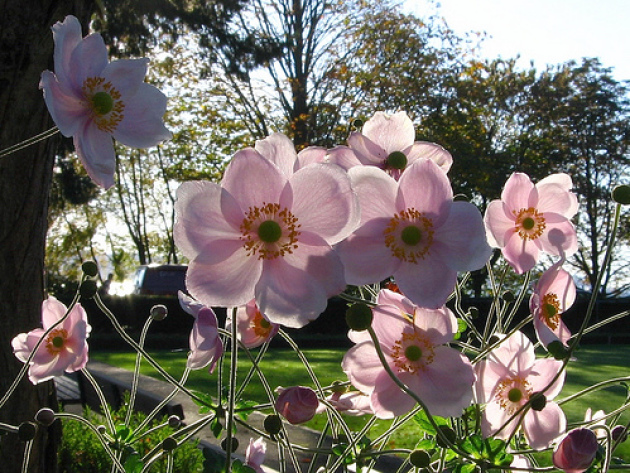
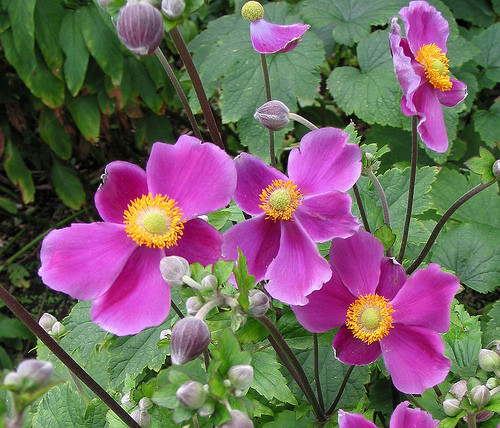
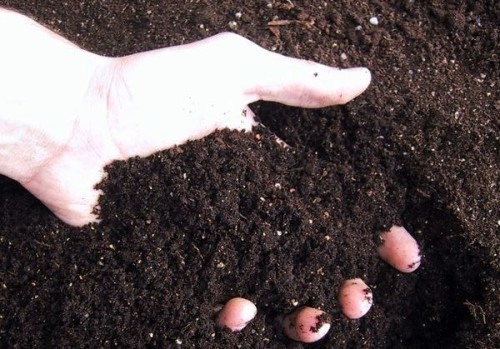
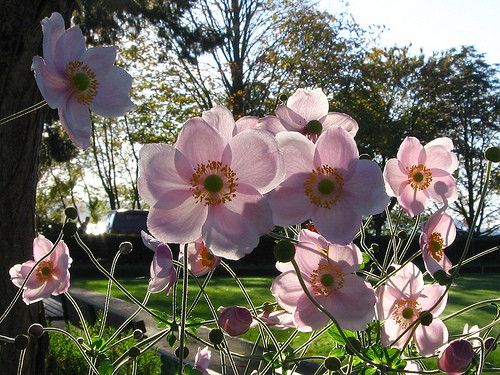
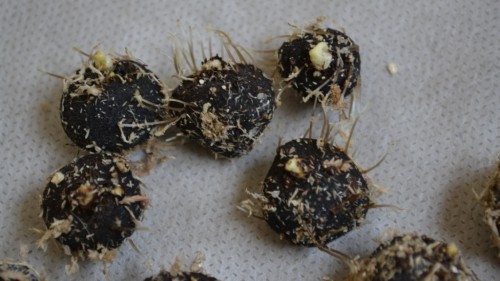
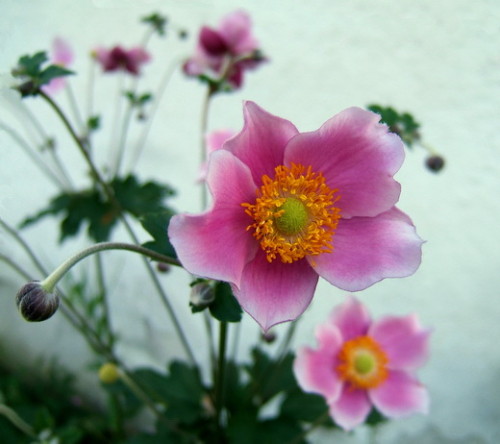












 Start a discussion ...
Start a discussion ...